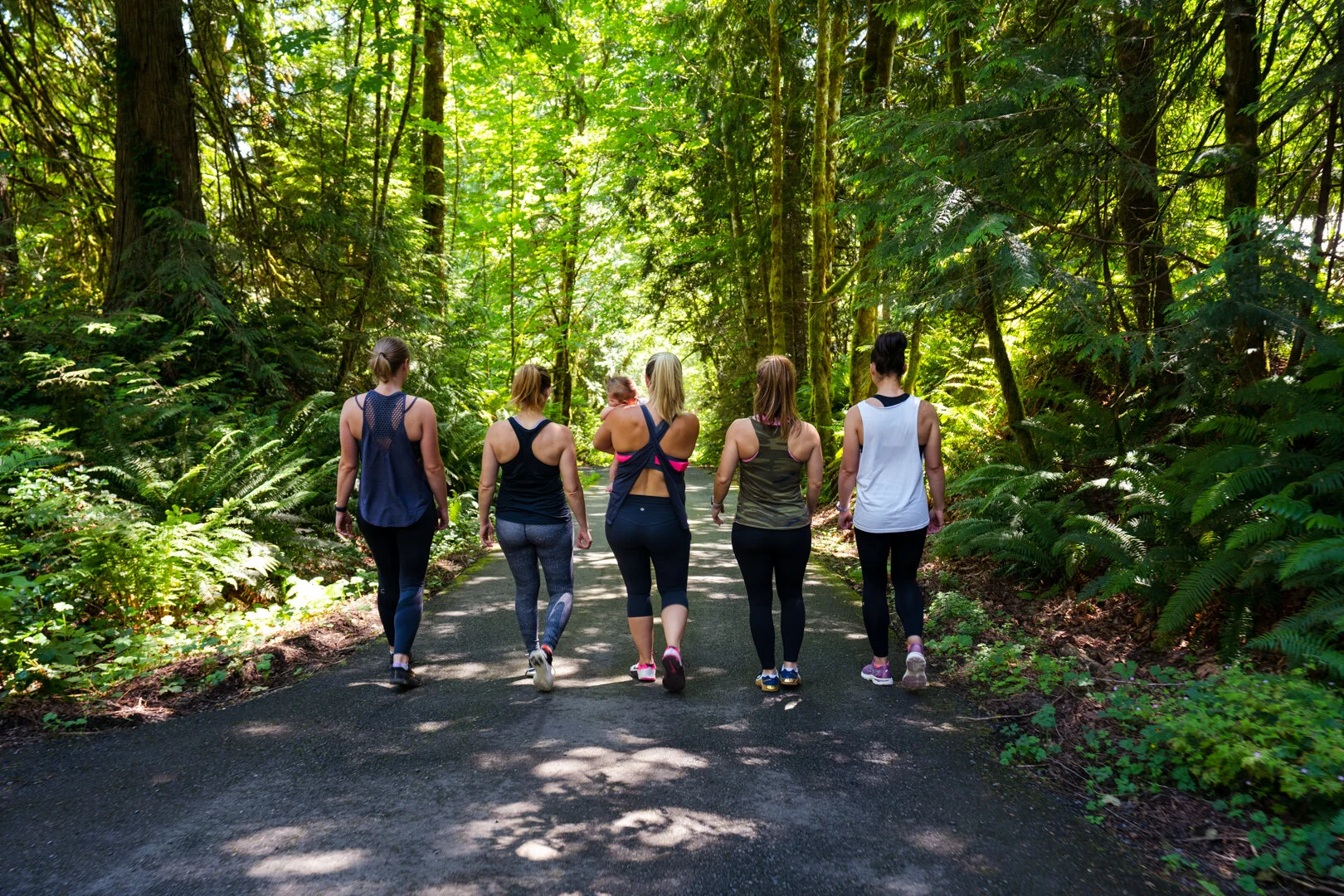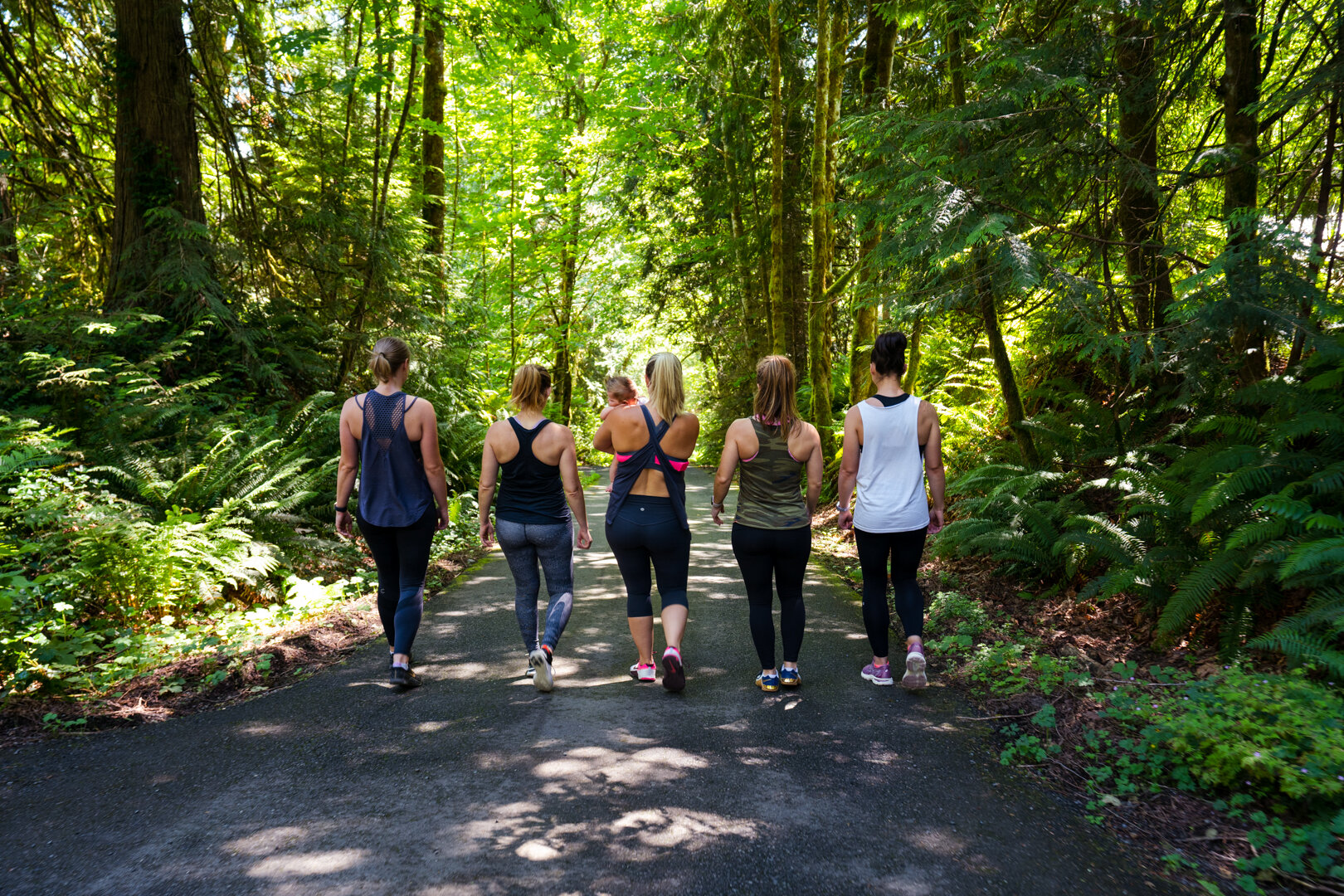Counteracting A Sedentary Lifestyle
A post workout walk with my Saturday morning group of girlfriends, Andrea, Daniela, Felicia, and Chelsea. Felicia’s sweet baby Troy makes a guest appearance.
With COVID-19 cases rising in the United States, many of us continue adjusting to working remote. The office commute is now a hallway commute (for those lucky enough to even have a home office), and walking from meeting to meeting or heading out to grab lunch has been replaced with sitting in front of a computer screen for hours on end with little to no breaks. Gyms are closed or at limited capacity in many states, as are other businesses and places of recreation. All of this is unprecedented for sure, but it has also led to a sudden downshift to a more sedentary lifestyle and a resulting increase in unwanted weight gain. The good news is that by making some slight adjustments, we can prevent and even reverse the impact of so much sitting.
Let’s Get Sciencey
The energy we consume versus the energy we expend is known as Total Daily Energy Expenditure. When energy consumed is balanced by energy expended, the result is weight maintenance. When energy consumed is less than energy expended, the result is weight loss. Energy we consume comes from the food we eat, or calories. Energy we expend is comprised of two parts. Resting Daily Energy Expenditure is the energy our body expends in performing basic metabolic functions like breathing and circulating blood. Non Resting Energy Expenditure (NREE) is the energy our body expends for everything else, including digesting food, exercising, and all other movement.
Each of the three components of NREE can be manipulated to increase energy expenditure above energy consumption, resulting in weight loss. Energy expended in digesting food is known as the Thermic Effect of Food. Believe it or not, a higher protein diet requires more energy for our body to process, meaning that you can expend more calories simply by eating more protein! WHAT?! Energy expended during intentional exercise is known as Exercise Activity Thermogenesis. This amount varies depending on duration, intensity, and type. Finally we come to energy expended during all other types of movement, or Non-Exercise Activity Thermogenesis (NEAT). Examples include activities such as household chores, yard work, AND all of the movement we’re doing less of due to COVID restrictions, like commuting, walking to meetings, and meeting up with friends for meals or other recreational activity. Sad face.
That’s NEAT!
That little creep on the scale you might be seeing? If your eating and exercise habits have remained consistent, then the results you’re seeing are due to a decrease in NEAT.
@thisgirl.inspired
While there are lots of ways to move, Low Intensity Steady State cardio (LISS) is particularly effective because it can be done by anyone, anywhere. LISS is easy on the joints and can be safely combined with an existing exercise program without impacting your training performance. Examples of LISS include low impact movements such as the elliptical, biking, and even, walking.
Wearables
If you have a fitness tracker such as a FitBit or Apple Watch, it can be interesting to watch the impact of NEAT on caloric expenditure. To share a personal anecdote, as we headed into quarantine, I noticed my daily movement went from around 750 calories to 400 on a good day. Understanding the impact of this sudden change in lifestyle, I began implementing LISS regularly. I actually split this up into 3-4 10 minute walks a day, which is just as effective! By the time my work day is over, my added movement puts me at 250 - 300 extra calories of energy expenditure, keeping me within the same range as when working in an office setting.
LISS and Weight Loss Plateaus
If attempting to use LISS for weight loss, there is some truth to its leading to weight loss plateaus when coupled with extreme restriction in energy consumption and a lack of variation in training type and intensity. In these cases, your metabolism slows as your body becomes more efficient at expending energy. You perform the same activity using less energy! If using LISS to speed up weight loss, any reduction in energy consumption should be moderate, with periodic returns to balanced energy consumption and expenditure. The most optimal results are achieved when varying LISS with strength training, as muscle growth speeds up metabolism.
Take Care of You
With so many norms disrupted and so much out of our control these days, it’s comforting to know we can invest in taking care of ourselves. So trade in that commute time for a nature walk, hit up a friend for a bike ride, and block time on your calendar to take short walks throughout the day. Your body and your mind will thank you!



